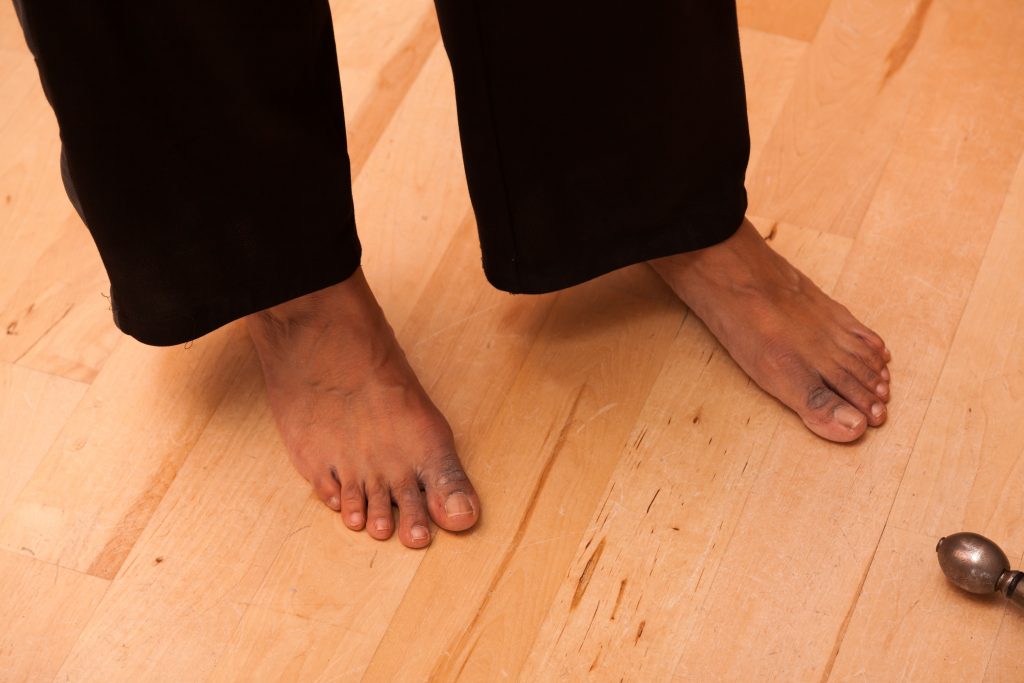Provost, what is better: practicing barefoot or in shoes?
I prefer and recommend practicing in shoes (keep reading; some students prefer barefoot which is fine). Ultimately, there are pitfalls to be aware of (and avoid) with either.
The biggest consideration I make is for personal health. That is, will your decision (shoes or no shoes) allow you to fence five years from now? Other considerations, not less important but less..... vital, I make are more in the "martial" realm ("does this obey and support the principles of the art?") A person prioritizing "martial choices" that ultimately ruin their body should put due consideration into their choice.
At the studio we have the benefit of a well-maintained and well-cared-for floor so bare feet is an option for us.
A lunger (mostly rapier practitioners but any other art that involves explosive lunging) has to be aware of how they are landing with their lead leg. Landing heel-then-toe is preferred here but there is a potential to land sharply on the heel. If you are barefoot and are landing sharply on your heel you will subconsciously start to lunge in a way that minimizes that impact and can lead to poor lunging mechanics (i.e. you'll subconsciously damage both the physical and martial aspects), most notably landing toe-to-heel.
Students who tend to get closer in engagements (e.g. longsword practitioners) and don't wear shoes run higher risks of injury when their feet collide. While having your feet stepped on is definitely unpleasant, I think the real danger is having your toenails ripped out.
So, some good reasons to wear shoes.
Looking at the other side of things, I find that shoes with thick soles often disconnect a student from their sense of where the ground is. It can lead to sloppy movement that is often corrected by removing shoes.
Most running shoes that I see are structured to provide a shell around the foot that limits the foot's ability to move (remember that the foot is a series of small bones with more mobility than just bending your toes). It's good for runners but I dislike this limitation. Do remember however that not all fencing contexts allow for maximum mobility in all your joints.
The shoe-positive recommendation I make is shoes that give a "barefoot" feel. Some examples of these are toe shoes, or these shoes from Merrel, or wrestling shoes.These are just a few examples; there are more out there that can provide some foot protection while also connecting you well to the ground and maintaining your foot mobility.
A friend of mine who served in the armed forces once told me: "take care of your feet first. You're on them all day, so you're a fool if you don't." I tend to agree with that sentiment. For that reason, I think investing in a pair of shoes that promote your practice is a sound decision.
Clint
Have a question to ask Clint? Submit your swordplay-related quandaries here!
Submission Guidelines:
- Questions must be about Western Martial Arts, or swordplay.
- Questions must be sent to the askclint@academieduello.com e-mail address to be considered.
- Questions may be edited at our discretion.
- Questions may be submitted anonymously, or with a sign off instead of your name.
